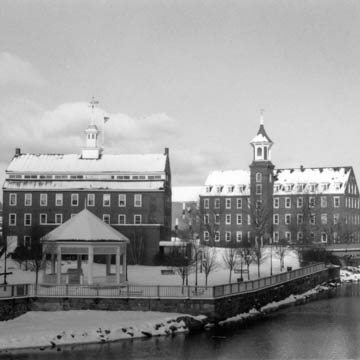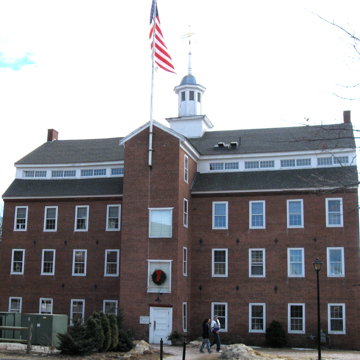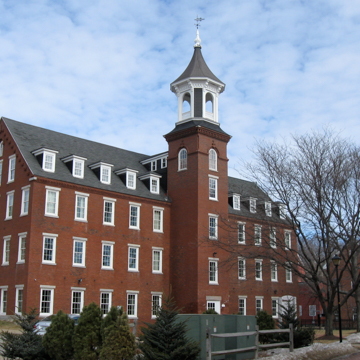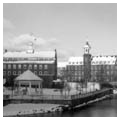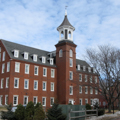These two outstanding mill structures were once the nucleus of a small manufacturing village, and have again become the focal point of downtown Laconia as a consequence of urban renewal and the efforts of the local Save the Mills Society. The oldest of these, the Belknap-Sulloway Mill, was erected in c. 1823–1828 and is believed to be the earliest surviving brick textile mill in the region, and one of the foremost examples of its building type in New England. Unlike the larger mill complexes in Manchester and Nashua, New Hampshire, the Belknap-Sulloway was a direct product of the Rhode Island manufacturing system, and was built on a small scale more typical of rural industry of the 1820s. Like its Rhode Island predecessors, the mill has a monitor roof, a central bell cupola, a front central stair tower, end stove chimneys, and a wooden framing system that utilizes light joist construction. Today the building accommodates the Belknap Mill Society, a museum devoted to local and regional history, and the arts.
Opposite the Belknap-Sulloway Mill, also at Mill Plaza, is the Busiel-Seeburg Mill, the earliest portion of which was begun in 1853 by businessman John W. Busiel (see BE22) to house the Busiel Granite Hosiery Mill. Initially, this small but imposing brick factory consisted of just the eastern half of the present structure, and a stair tower on the north side which was subsequently removed. In 1873 a new office building was erected, followed in 1877 by a new picker house, today part of the current complex. The west half of the mill, along with the south-facing central stair tower, were added the next year, and a finishing building in 1882. The later octagonal cupola atop the stair tower, with its concave roof, finial, and weathervane, adds aesthetic quality to the full complex. The construction of the interior reflects the use of “slow burning” wooden floor framing, which was a dominant feature of New England textile mill design after the Civil War. A major producer of hosiery, the Busiel mill was one of the first to introduce circular knitting machines with latched needles in the mid-1850s. An excellent example of successful adaptive reuse, the complex houses professional offices today.






